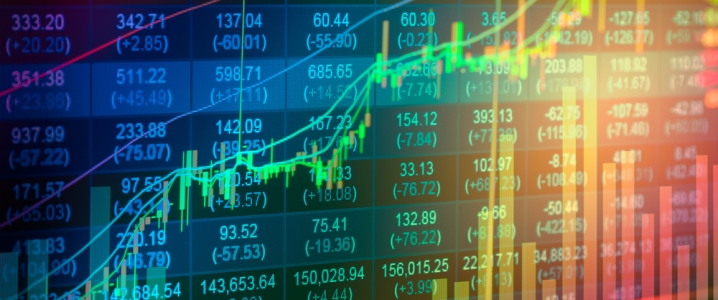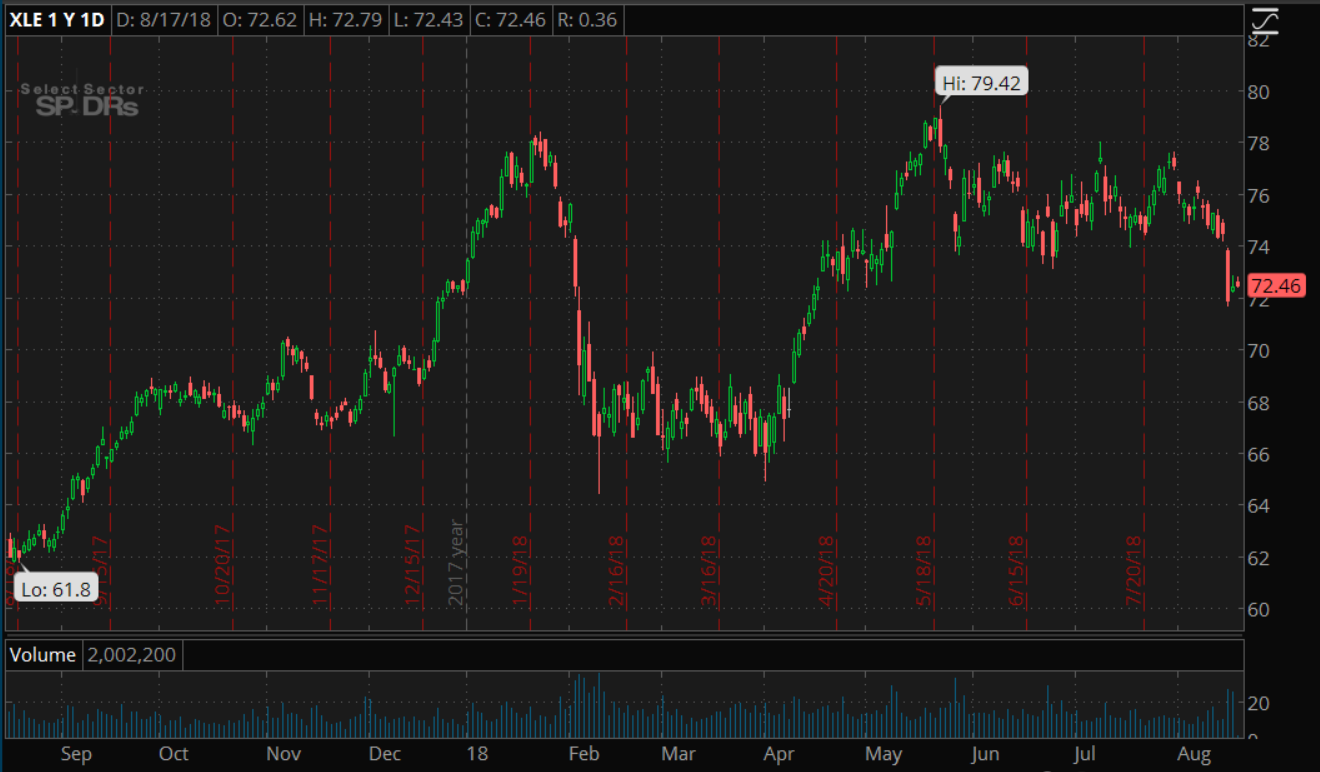Financial markets reacting negatively to a seemingly obscure or remote risk was commonplace not that long ago. Whether it was a slightly disappointing Chinese growth number, fears about the future of the Euro, or concerns about Greek debt, much of the recovery from the recession has been about lurching from worry to worry. In the last couple of years, however, that has eased. There has been a focus on improved global growth, lifting stocks as well as growth dependent commodities such as oil. Sure, the OPEC+ agreement to cut output has helped, but the long upward run in crude prices could not have happened without a belief that the demand picture was improving.
This week, however, that ended as a run on the Turkish lira instigated fears of contagion and another banking crisis. So, with a whiff of international panic in the air, how should energy traders and investors react?
(Click to enlarge)
First, it is important to remember that what is in the headlines is not the only influence on the price of oil. The move down from the mid-seventies to challenge the psychologically important $65 level that you can see in the chart above has gone through several phases, with both the supply and demand sides of the pricing equation having an influence. It really started as reports of increased crude output by Saudi Arabia prompted doubts about the sustainability of the output cuts but has been sustained by demand concerns. At first those concerns were focused on…
Financial markets reacting negatively to a seemingly obscure or remote risk was commonplace not that long ago. Whether it was a slightly disappointing Chinese growth number, fears about the future of the Euro, or concerns about Greek debt, much of the recovery from the recession has been about lurching from worry to worry. In the last couple of years, however, that has eased. There has been a focus on improved global growth, lifting stocks as well as growth dependent commodities such as oil. Sure, the OPEC+ agreement to cut output has helped, but the long upward run in crude prices could not have happened without a belief that the demand picture was improving.
This week, however, that ended as a run on the Turkish lira instigated fears of contagion and another banking crisis. So, with a whiff of international panic in the air, how should energy traders and investors react?

(Click to enlarge)
First, it is important to remember that what is in the headlines is not the only influence on the price of oil. The move down from the mid-seventies to challenge the psychologically important $65 level that you can see in the chart above has gone through several phases, with both the supply and demand sides of the pricing equation having an influence. It really started as reports of increased crude output by Saudi Arabia prompted doubts about the sustainability of the output cuts but has been sustained by demand concerns. At first those concerns were focused on the bear market in China, but this week the situation in Turkey has taken center stage.
As an old interbank forex guy, I feel obligated at this time to point out that if this proves anything it is that when all is said and done, currency traders still rule the world. The heavy selling of the Lira is what both signaled and exacerbated Turkey’s problems, and no matter how much Erdogan may complain there is little that he can do. As others, some smaller Asian countries in 1998, have found out, once the forex market gets the bit between its teeth it can quickly become an unstoppable force, but when that happens it is almost always for a reason.
The fact is that Turkey is in a mess. Erdogan’s love of low interest rates and easy money regardless of conditions may have bought him some short-term political gains but economically they have been disastrous. Inflation in Turkey has been worsened by the currency’s collapse, but it had already taken a firm hold before the current crisis. The U.S. sanctions were not the cause here, but rather the straw that broke the camel’s back.
Don’t get me wrong, though, while I believe that Turkey could face further problems, that doesn’t mean that investors should panic. The problem is a financial one, and the relatively small size of the Turkish economy means the direct effect on oil demand, or that of its European trading partners, would be virtually zero. If anything, averaging into a long position in energy stocks over the next few weeks in the belief that “this, too shall pass” look like a smart move. Of course, contagion is possible, but history has shown us that the most likely outcome when a crisis hits a small economy is that it takes time to unfold, and with time the worries of traders and investors fade.

(Click to enlarge)
So, with the SPDR Energy Sector ETF (XLE) bouncing slightly off a low on this move just below $72, now looks like a good time to start buying. As always with oil, other things need to fall into place as well and there is some headline risk, but the most obvious non-Turkey, supply-side risks seem to be priced in at this point. The Saudis have been essentially caught cheating on the output cuts but have managed to explain it away and avoid any major fallout, and North American output growth has slowed recently.
That leaves the focus on demand. There is some risk of a global slowdown if there is contagion from Turkey, but after a week or so of panic about a problem that has existed for a year or so, that too looks to be fully, if not excessively, priced in to crude. That in turn means that there is value to be had, and whether you play that through an ETF such as XLE or through individual stocks the recent bear run is a buying opportunity.
















